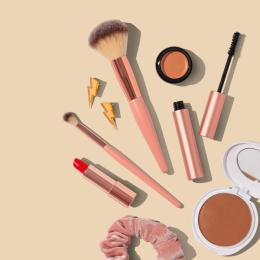Dress to Protect: Your Guide to Avoiding Toxic PFAS Clothing

By Wildr Editor

You've probably heard about PFAS in the news lately - and for good reason. This toxic chemical is shockingly widespread in clothing and linked to some serious health issues. But what exactly is PFAS and why should you care? More importantly, how can you avoid it when shopping for clothes? We've got you covered with all the essential info plus a handy list of which popular clothing brands are PFAS-free.
What is PFAS Anyway?
PFAS stands for per- and polyfluoroalkyl substances. That's a mouthful, but basically it refers to a large group of man-made chemicals used for their water and stain-resistant properties. PFAS are sometimes called "forever chemicals" because they don't break down naturally and accumulate in the environment and our bodies over time.
For skin health, have you checked what’s in your sunscreen?
Where is PFAS Found?
Unfortunately, PFAS is pretty much everywhere. It's used in non-stick cookware, food packaging, carpets, furniture, and yep - clothing. Many apparel brands use PFAS to make garments water-repellent or stain-resistant, especially outerwear, athletic wear, and uniforms. The problem is, PFAS doesn't stay put. It can leach out of clothes into the air, dust, and directly onto skin.
According to a recent report by the Environmental Working Group (EWG), PFAS was even detected in a wide range of baby and children's products, including:
- Waterproof bibs
- School uniforms
- Rain jackets and boots
- Crib mattress pads and covers
- Snack bags
These findings highlight just how pervasive PFAS contamination is, even in products designed for infants and young children who are particularly vulnerable to the health risks associated with these chemicals. While these findings might seem alarming, they empower us to make more informed choices and advocate for change.
Why is PFAS Harmful?
Exposure to PFAS has been linked to various health concerns, including certain cancers, liver damage, decreased fertility, thyroid disease, weakened immune system, and developmental issues in children. While scientists are still researching the full scope of PFAS health effects, it's clear that reducing our exposure is a smart choice.
How to Avoid PFAS in Clothing
The tricky thing is you can't always tell if clothing contains PFAS just by looking at the label. Apparel brands aren't required to disclose PFAS use, and there's no consistent, regulated labeling system. Terms like "water-resistant," "stain-proof," or "performance" can sometimes (but not always) indicate PFAS treatment.
While there's no surefire way to completely avoid PFAS, you can minimize your exposure by choosing brands that are transparent about their PFAS policies. A survey by U.S. PIRG Education Fund, NRDC, and Fashion FWD found that several top apparel brands are taking steps to phase out PFAS:
Leading the Way:
- Levi Strauss & Co. leads the industry with strong PFAS elimination policies.
- Victoria's Secret and Deckers Brands (including UGG, Teva, and others) are also committed to phasing out PFAS.
- Keen Footwear earns high marks for removing toxic chemicals from its shoes.
Clear Commitments:
- American Eagle, Ralph Lauren, Gap Inc., and PVH (parent company for brands like Tommy Hilfiger, Calvin Klein, Speedo, and Patagonia) have clear, time-bound commitments to phase out all PFAS from their apparel.
Room for Improvement:
- 18 out of the 30 brands and retailers surveyed, including well-known names like Walmart, Wolverine (parent of Hush Puppies, Keds, Merrell, Stride Rite, and other brands), Macy's, and Skechers, received a grade of D or lower for weak or lack of public commitments to eliminate PFAS.
Outdoor Industry Lags Behind:
- Patagonia received the highest grades among U.S. outdoor apparel brands surveyed for its timeline to eliminate all PFAS use.
- Other U.S. outdoor brands like REI, VF Corp. (parent of The North Face, Timberland, Jansport, and others), and L.L. Bean received low grades for incomplete commitments or long phase-out timelines.
- European outdoor apparel companies Jack Wolfskin, Houdini, and Vaude, and outdoor textile supplier Polartec® have already eliminated PFAS from their supply chains.
Tips to reduce PFAS exposure from clothing:
- Opt for natural fabrics like cotton, linen, and wool when possible, especially for items worn close to the skin.
- Wash new clothing before wearing to help remove some surface chemicals.
- Seek out brands that use PFC-free DWR (durable water repellent) finishes for outdoor gear, like Fjällräven and Jack Wolfskin.
- Choose secondhand or vintage clothing: Older garments are less likely to have been treated with PFAS, as these chemicals became more prevalent in recent decades.
- Avoid clothing marketed as "performance," "waterproof," “wrinkle-free,” "stain-resistant," or "non-iron" unless the brand explicitly guarantees it's PFAS-free.
- Wash clothing less frequently: Each wash can cause PFAS to leach out of treated garments and into the water supply. By washing your clothes only when necessary, you can reduce the amount of PFAS released into the environment.
- Avoid using fabric softeners and dryer sheets: These products can contain PFAS and other harmful chemicals that coat your clothing. Instead, use wool dryer balls or add a cup of white vinegar to the rinse cycle for softer clothes.
- Support legislation for stronger PFAS regulations and mandatory reporting in apparel.
- Spread awareness about PFAS: Share information about the dangers of PFAS and the importance of choosing PFAS-free clothing with friends, family, and on social media.
By taking these steps and making informed choices about the clothing we buy and how we care for it, we can all play a part in reducing our exposure to PFAS and driving positive change in the fashion industry. Every small action adds up to create a healthier, more sustainable future for everyone.
The growing list of companies committed to phasing out PFAS is encouraging, but there's still a long way to go.
As consumers, we have the power to vote with our wallets and put pressure on brands to eliminate forever chemicals from their products.
It's time for the fashion industry to kick PFAS (pun intended) for good.



